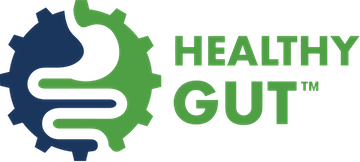Phenols and Salicylates: What They Are and Why It Matters

Phenols are nothing more than natural chemicals made up of a benzene ring with one or more hydroxyl (OH) groups attached to it (science talk for how it is put together). They are found in many of the foods we eat like fruits, veggies, and nuts and can also be man-made for use in common non-food applications such as toothpaste, hair dyes, medicine, and disinfectants. It is important to remember that most foods have some level of phenols in them (there are many subgroups, compounds, and close chemical relatives) and that they are natural and can even be beneficial to the body, as is the case with antioxidants in fruit.
Salicylates are one type of phenol in the phenol family and scientists believe they are produced by plants for use as their own natural protection from diseases, insects, fungi, and harmful bacteria. They are made up of a phenol compound with an additional COOH group (more science talk about how it is put together). As it turns out, salicylates are chemically very similar to the man-made chemical acetylsalicylic acid, more commonly known as Aspirin.
Dr. Feingold is probably the most widely-known individual to study this chemical, as he developed what is now referred to as the Feingold Diet. Parents with children on the Autism Spectrum are usually familiar with his work. He started out in the 1960s, as a pediatrician and allergist, studying children’s negative reactions to aspirin. Through his work, he found that many other dietary chemicals were causing physical and even behavioral reactions in his patients. He developed the Feingold Diet to eliminate all food additives, colorings, and salicylates.
Why Do People React to Them?
In a normal body, one with the correct levels of sulfates and liver enzymes, phenols and salicylates are easily metabolized. The body utilizes what it needs from the chemicals and properly disposes of the rest through the bowels. In those whose levels are abnormal, or in the case of leaky gut syndrome, intolerance to this chemical family can occur rather quickly.
Many people with gut issues, such as yeast/bacteria overgrowth or digestive diseases, can develop salicylate intolerance as a result of leaky gut Syndrome. Leaky gut is a result of various digestive problems and occurs when the small intestine becomes too damaged to properly filter the size and types of food particles or chemicals that enter the bloodstream (for more on leaky gut read this). When these improper particles are allowed to repeatedly enter the bloodstream, the body tries to get rid of them by triggering an immune system response. Because phenols/salicylates are so common in most foods, a person with a leaky gut will have much higher than normal levels of these chemicals in their blood and can very quickly develop intolerances to these specific particles.
Why Can It Affect Children on the Autism Spectrum More?
Research by Dr. Rosemary Waring, at the University of Birmingham, found that children on the Autism Spectrum have low levels of the enzyme phenol-sulfotransferase-P (the enzyme that breaks down the phenol and amine families, also known as PST) and the substrate it uses: sulfates. Sulfates are a key tool the body uses in the process of detoxification and breaking down phenols such as salicylates. Without normal levels of sulfates in the body the sulfotransferase enzyme cannot do the task it was created to do: metabolize salicylates. So, there are two problems

with PST deficiency: low sulfate levels and low enzyme levels. PST deficiency alone can cause problems in children (remember phenols are normal), but factor in any intestinal damage resulting in leaky gut along with it and your child’s body can easily be overwhelmed. The end result is a salicylate intolerance and the subsequent physical and behavioral reactions that come with it.
Reactions Caused By Phenols
Salicylates stimulate the central nervous system in people that react to them. This can often bring with it an emotionally extreme high followed by a very low, low. Other reactions to the phenol family can occur anywhere from immediately after consumption and up to 48 hours after the consumption of the chemical depending on the immune response. Physical reactions can include: dark circles under the eyes, red face/ears, diarrhea, headache, difficulty falling asleep at night, night waking, and in some cases excessively tired and lethargic. Behavioral symptoms of a reaction can be: hyperactivity, aggression, head banging or other self-injury, and even inappropriate laughter. Hyperactivity is more common in children’s reactions, whereas adults generally experience symptoms similar to chronic fatigue.
How Does SCD Fit In?
The tough part is that phenols, and more specifically salicylates, are found in most foods that we eat, so it is almost impossible to completely eliminate them from your diet. The most realistic thing to do is to try to only eat the foods that contain smaller amounts of the chemical by incorporating a low-salicylate diet.
SCD is great for addressing digestive imbalances which contribute to leaky gut, whereas the low-salicylate diet does not. When comparing the two side-by-side, the SCD diet can appear to completely contradict a low-salicylate diet. As SCD includes many fruits, veggies, and nuts that are also high in phenols, trying to combine the two can leave you wanting to pull your hair out. The good news is that in the beginning stages of SCD most people peel and cook their fruits and veggies, which eliminates a large portion of the chemical. To get an idea of phenol levels in foods we’ve included a few links to good phenol/salicylate food charts:
– http://www.zipworld.com.au/~ataraxy/Salicylates_list.html
– http://salicylatesensitivity.com/food-guide
The best approach is to try a hybrid SCD diet that is low in salicylates where you become more conscience of using fruits, veggies, and nuts that contain lower levels of the chemical and see if any symptoms improve. To help with this, we looked at the amazing work of the folks at www.pecanbread.com and the stages diagrams that they have published. We updated the charts to include an indication of the level of phenols in each item. They are available for free to download as a PDF here: just enter your name and email to download them. The lower phenol containing foods are at the top of each section shown with lighter colors and the phenol level increases down the list with the darker color transitions. The charts can help you to methodically introduce new foods as you progress through the diet while only using those foods that are lower in phenol content.
Over time, there is a possibility that the immune system responses to chemicals will die down. In that case, try introducing some foods higher in phenols that are only consumed every 4 days and see if the symptoms return. In some cases a four day rotation will be enough to avoid a reaction, but in others there will always be a reaction. In both situations, awareness of the chemical levels in the foods that are being consumed can drastically improve physical and behavioral reactions that might linger even while strictly following SCD.
Good luck and good health!
-Jordan
Did You Like this Article?
Subscribe to our newsletter to receive email notifications, some ways to find relief, and next steps.
